
Intro
History is not just a collection of dates and events; it’s the story of who we are and how we got here. Whether you’re a history buff or a casual reader, diving into history books can provide invaluable insights into the human experience. From ancient civilizations to modern political dynamics, history books can help us understand the past and make sense of our present. Here are five must-read history books that offer captivating narratives and profound perspectives on the world.
Sapiens: A Brief History of Humankind by Yuval Noah Harari
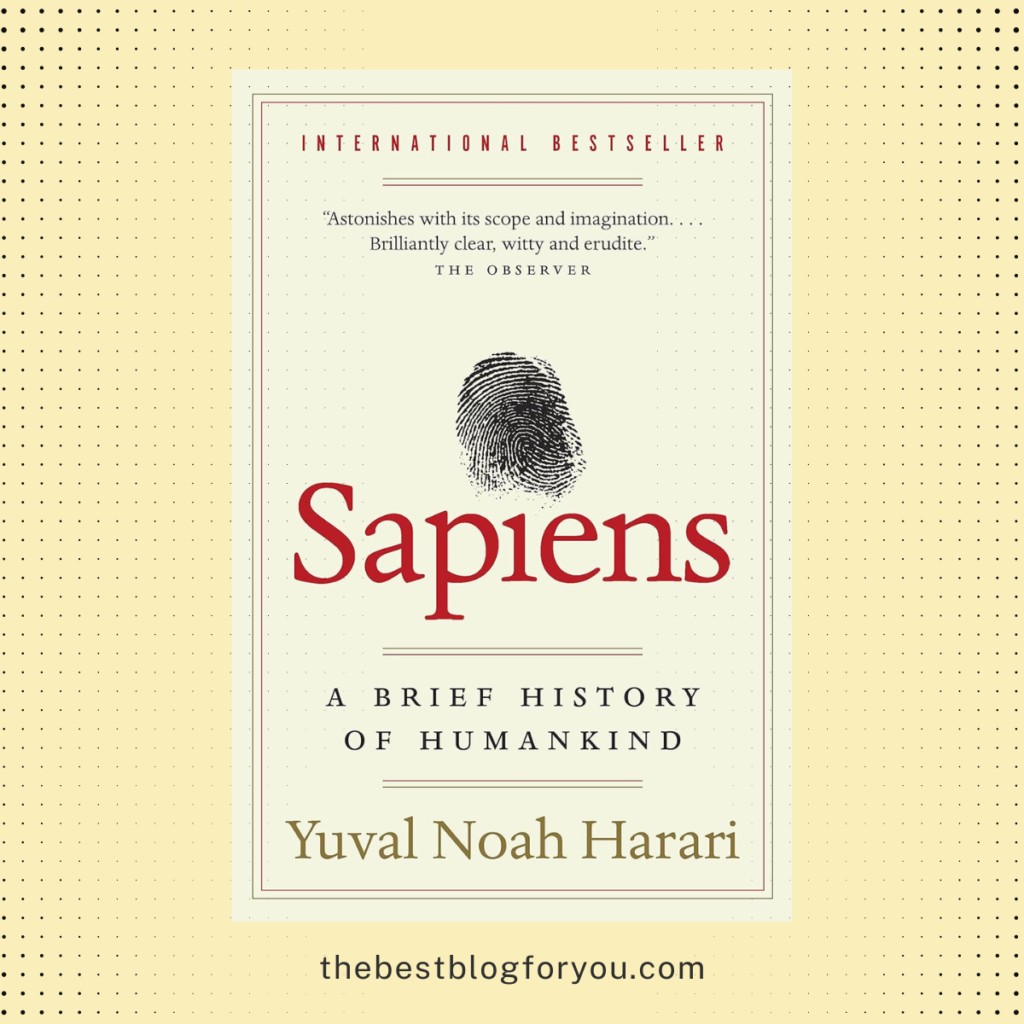
In “Sapiens,” Yuval Noah Harari offers a comprehensive exploration of human history, guiding readers through our evolution from primitive beings to the predominant species on Earth. Harari dissects our past by highlighting pivotal revolutions—cognitive, agricultural, and scientific—that have profoundly shaped human societies. By doing so, he provides a fresh perspective on the journey of Homo sapiens and the forces that have driven our development.
One of the standout elements of “Sapiens” is Harari’s ability to distill complex theories and vast historical periods into clear, engaging narratives. He delves into how our species’ unique cognitive abilities set us apart, enabling us to create myths, languages, and social structures that foster large-scale cooperation. This cognitive revolution laid the groundwork for subsequent transformations, such as the agricultural revolution, which fundamentally altered human lifestyles and societal organization.
Harari also examines the scientific revolution’s impact, tracing how advances in knowledge and technology have empowered humans to dominate their environment and other species. This exploration extends to modern issues, as Harari raises thought-provoking questions about capitalism, imperialism, and the future trajectory of human societies. His discussions prompt readers to reflect on their own beliefs and consider how historical forces continue to shape the contemporary world.
Another intriguing aspect of “Sapiens” is its multidisciplinary approach. Harari incorporates insights from biology, anthropology, and economics, offering a well-rounded view of human history. This synthesis of different fields enriches the narrative, making it accessible and relevant to readers with diverse interests. The book challenges conventional historical narratives by emphasizing the roles of chance, adaptation, and cultural evolution in shaping human societies.
Harari’s engaging writing style and thought-provoking content make “Sapiens” a compelling read for anyone interested in understanding the broader arcs of human history. His ability to connect past events with present-day issues provides valuable context for contemporary debates and challenges. By examining how our ancestors’ choices and adaptations have led to current societal structures, Harari encourages readers to think critically about the future.
“Sapiens” is not just a recounting of historical events; it is a meditation on what it means to be human. Through its sweeping narrative and insightful analysis, the book offers a deeper appreciation of our shared history and the complex forces that have shaped our world.
Guns, Germs, and Steel by Jared Diamond
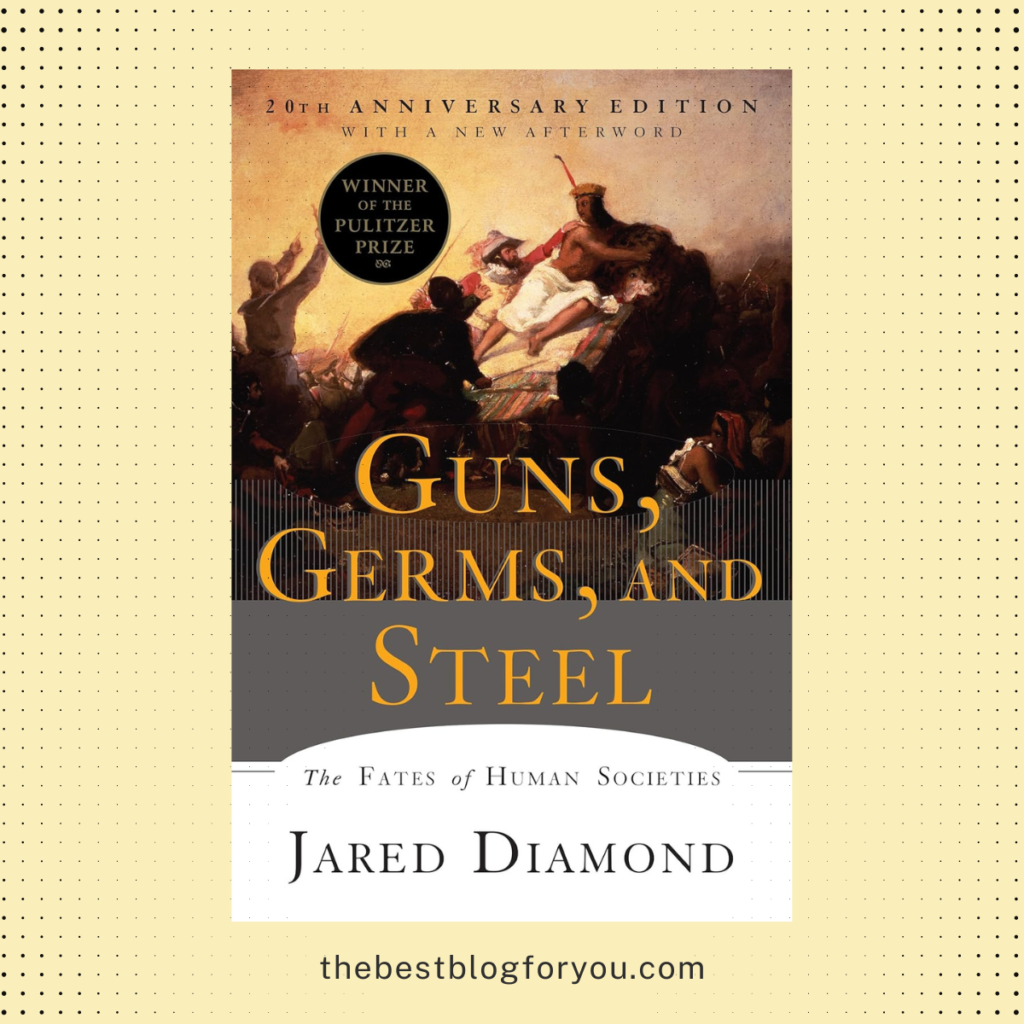
In “Guns, Germs, and Steel,” Jared Diamond delves into the deep-rooted factors that have shaped the fates of civilizations around the globe. Diamond challenges the notion that some societies thrived due to superior intelligence or inherent capabilities. Instead, he argues that geographical and environmental factors played a pivotal role in determining the trajectory of human societies.
One of the central themes in Diamond’s analysis is the impact of agriculture on societal development. He posits that the availability of domesticable plants and animals allowed certain societies to establish stable food sources, leading to population growth and the development of complex social structures. This agricultural advantage enabled some regions to support large, organized communities and eventually, powerful states.
Geography also emerges as a crucial determinant in Diamond’s exploration. He illustrates how the orientation of continents—whether they are aligned along an east-west axis like Eurasia or a north-south axis like the Americas and Africa—affected the spread of crops, animals, and technologies. Eurasia’s horizontal orientation facilitated the diffusion of agricultural innovations, giving its societies a head start in terms of development and expansion.
Diamond further examines the roles of germs and technology in shaping historical outcomes. Societies that developed in close proximity to domesticated animals built immunities to diseases that later decimated less exposed populations. This biological advantage proved decisive during periods of conquest and colonization. Additionally, technological innovations, such as the development of guns and steel tools, provided certain civilizations with the means to dominate others.
Drawing from disciplines like biology, anthropology, and archaeology, Diamond’s work provides a multidisciplinary perspective on history. He underscores that the success and failures of civilizations are often the result of a complex interplay of environmental and geographical factors rather than simple human ingenuity or effort.
By weaving together these elements, Diamond prompts readers to reconsider traditional narratives of historical progress. His work highlights the importance of context in understanding why some societies advanced while others did not, offering a nuanced view that moves beyond simplistic explanations.
For readers keen on exploring the intricate web of factors that have influenced global history, “Guns, Germs, and Steel” is an enlightening read. Diamond’s interdisciplinary approach enriches the narrative, making it accessible to those interested in the broader contexts that have shaped our world.
The History of the Ancient World by Susan Wise Bauer
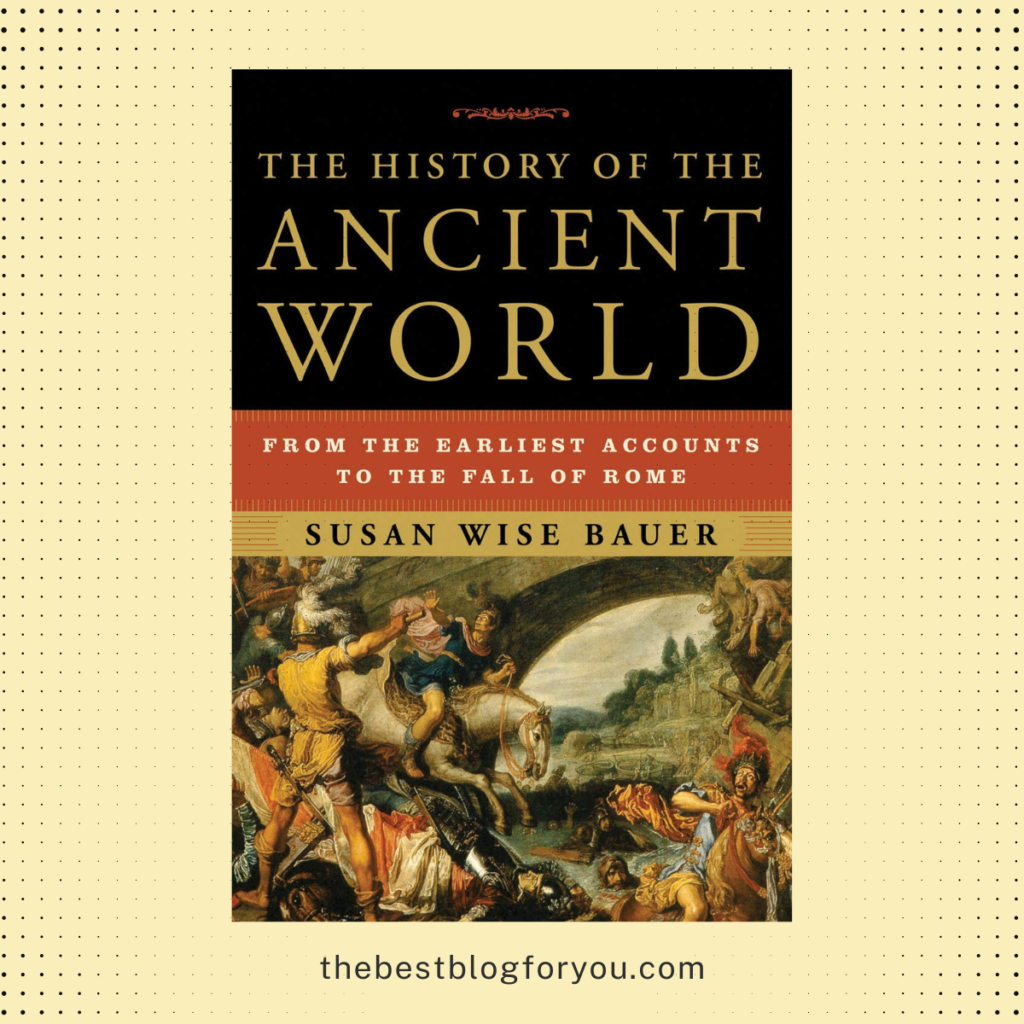
Susan Wise Bauer’s “The History of the Ancient World” offers a sweeping narrative of the early civilizations that laid the groundwork for modern society. Bauer spans the earliest recorded history to the fall of Rome, delivering an engaging chronicle of empires such as Mesopotamia, Egypt, Greece, and China. Each chapter is crafted to make the complex histories of these ancient cultures accessible and relatable to today’s readers.
One of the strengths of Bauer’s work lies in her ability to weave together the stories of disparate civilizations, showing their interconnectedness and mutual influence. She demonstrates how these ancient societies, though separated by vast distances, engaged in trade, warfare, and cultural exchanges that shaped their development. For instance, Bauer illuminates how the innovations of the Mesopotamians in writing and law influenced neighboring regions and set a precedent for future empires.
Bauer’s writing is both informative and captivating, bringing to life the grandeur and struggles of ancient rulers and commoners alike. She delves into the achievements and failures of notable figures such as Hammurabi, Ramses II, and Alexander the Great, offering readers a vivid portrayal of their contributions and the contexts in which they lived. These character-driven narratives help readers connect with the past on a personal level, making history feel less like a distant series of events and more like an ongoing human story.
The book also explores the religious and philosophical developments that emerged from these early civilizations. Bauer examines how belief systems like those in ancient Egypt and philosophical traditions from Greece have left lasting legacies on modern thought and culture. By tracing these intellectual traditions, she underscores the enduring impact of ancient wisdom on contemporary societies.
Bauer’s meticulous research and clear prose make “The History of the Ancient World” not just a recounting of historical events but a detailed exploration of the human experience across millennia. Her ability to synthesize vast amounts of information into a cohesive and engaging narrative is particularly valuable for readers who might be new to ancient history or looking to deepen their understanding.
Through her work, Bauer provides a foundational understanding of how ancient civilizations have influenced the world we live in today. Her attention to detail and narrative skill ensures that readers come away with a nuanced appreciation of the ancient world’s complexities and its relevance to our current global society.
Team of Rivals: The Political Genius of Abraham Lincoln by Doris Kearns Goodwin
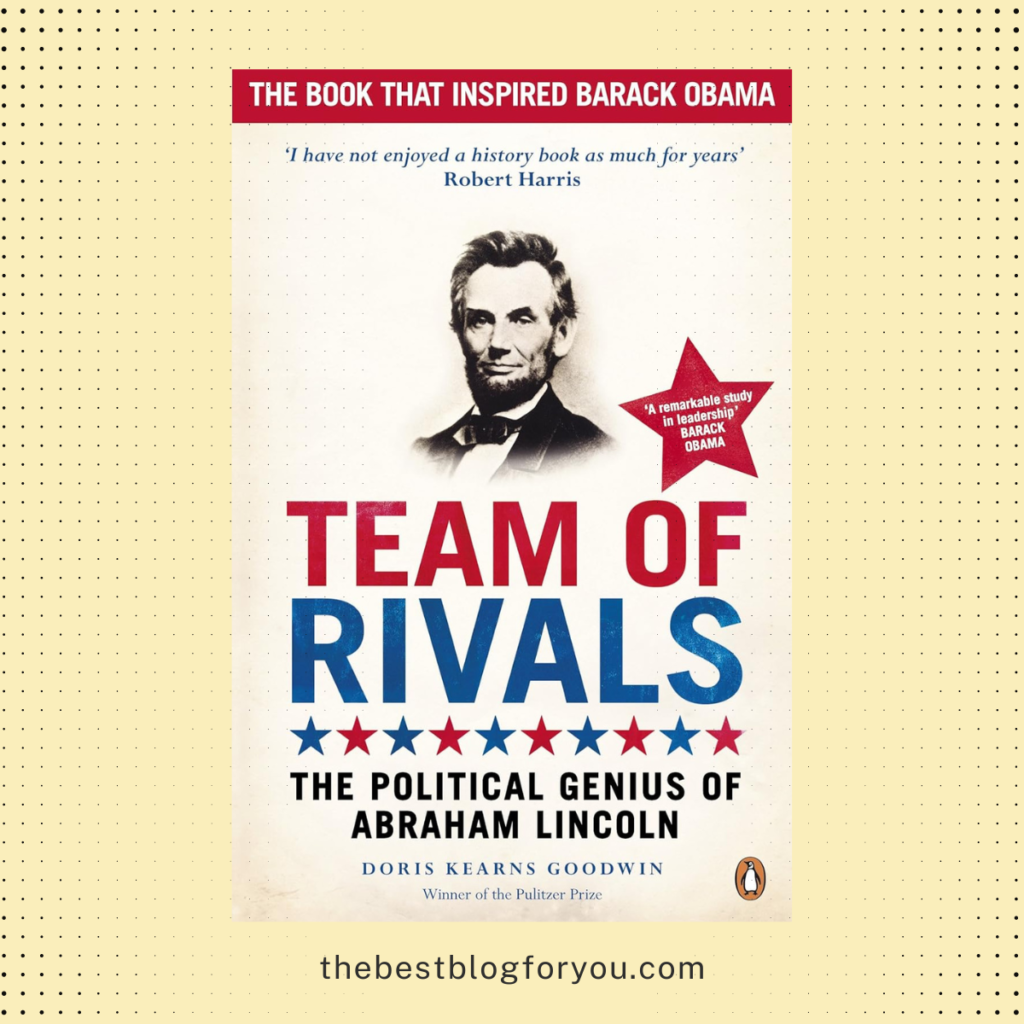
Doris Kearns Goodwin’s “Team of Rivals” offers an extraordinary glimpse into the leadership and political acumen of Abraham Lincoln during the American Civil War. Rather than focusing solely on Lincoln himself, Goodwin illuminates the dynamics of his cabinet, composed of a group of men who were initially his fiercest political opponents. This unique composition was Lincoln’s genius—he recognized the value of their varied perspectives and skills, and united them under a common cause to preserve the Union.
Drawing from a wealth of primary sources such as letters, diaries, and official documents, Goodwin meticulously reconstructs the intricate relationships within Lincoln’s cabinet. Figures like William H. Seward, Salmon P. Chase, and Edward Bates, each formidable in their own right, brought their expertise and, at times, conflicting views to the table. Lincoln’s ability to manage these strong personalities and harness their potential was crucial in navigating the nation through its darkest hours.
Goodwin’s portrayal of Lincoln reveals a leader who was not just politically shrewd but also deeply empathetic. He had an extraordinary capacity for understanding human nature and leveraging it to achieve his goals. This empathy was evident in his personal interactions, where he often used humor and storytelling to diffuse tension and build rapport. His inclusive approach created a sense of shared purpose among his advisors, even when they disagreed on key issues.
The book also delves into the major political and military strategies employed during the Civil War, illustrating how Lincoln’s leadership style impacted critical decisions. His patience and willingness to listen allowed him to weigh different viewpoints before making informed choices. Goodwin argues that it was this quality—his openness to advice and dissent—that enabled him to lead effectively during such a divisive time.
Goodwin’s narrative is both compelling and accessible, making the complexities of Civil War politics engaging for readers. She skillfully balances personal anecdotes with broader historical analysis, painting a vivid picture of a president who rose above the fray of partisan politics to steer the country through its existential crisis.
For those interested in American history, leadership, or political strategy, “Team of Rivals” is a deeply insightful read. Goodwin’s exploration of Lincoln’s cabinet offers valuable lessons on the power of collaboration, the importance of diverse viewpoints, and the human qualities that define effective leadership. Her rich, detailed account provides a fresh perspective on one of America’s most revered presidents and the inner workings of his administration during a pivotal era in history.
The Silk Roads: A New History of the World by Peter Frankopan
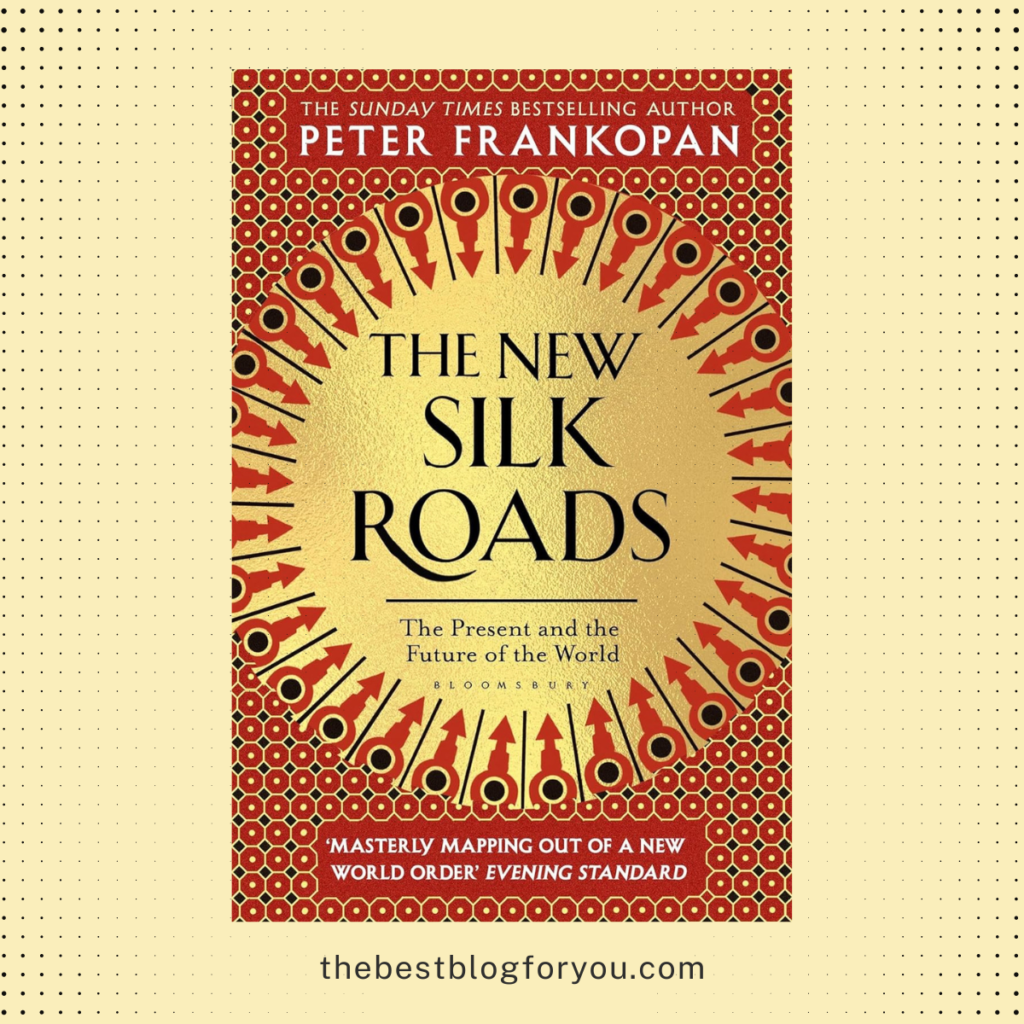
Peter Frankopan’s “The Silk Roads” provides a transformative re-examination of global history through the lens of the ancient trade routes that connected the East and West. By shifting the focus from a traditionally Eurocentric view, Frankopan places the regions of the Middle East and Central Asia at the heart of historical narratives, offering fresh insights into their pivotal roles in shaping the world.
Frankopan’s engaging storytelling guides readers through the intricate web of trade, culture, and religion that flowed along these routes. He highlights how the Silk Roads facilitated not only the exchange of goods but also the transfer of ideas, technologies, and cultural practices. This convergence of diverse influences played a crucial role in the development of civilizations and the spread of major religions such as Buddhism, Islam, and Christianity.
One of the strengths of “The Silk Roads” is its ability to illustrate the interconnectedness of different cultures long before globalization became a buzzword. Frankopan delves into the political and economic dynamics that underpinned these interactions, showing how empires rose and fell based on their control of these critical trade arteries. He also examines the impact of the Silk Roads on art, science, and philosophy, revealing a rich tapestry of human achievement and exchange.
Frankopan’s narrative spans millennia, covering a vast array of historical periods and events. From the rise of the Persian Empire to the spread of the Black Death, he demonstrates how the Silk Roads were instrumental in shaping pivotal moments in history. By providing context for these events, Frankopan helps readers understand the broader implications of the Silk Roads on global development.
“The Silk Roads” challenges readers to rethink conventional historical narratives and appreciate the profound impact of cross-cultural exchanges. Frankopan’s meticulous research and vivid prose make complex historical processes accessible, engaging, and enlightening. His work underscores the importance of viewing history through a global lens, recognizing the interconnectedness that has always defined human societies.
For those interested in understanding the forces that have shaped our interconnected world, “The Silk Roads” is an essential read. Frankopan’s comprehensive and nuanced exploration offers a deeper appreciation of the historical threads that bind us all, making it a compelling addition to any history enthusiast’s bookshelf.

2 thoughts on “Top 5 History Books Everyone Should Dive Into.”
Comments are closed.